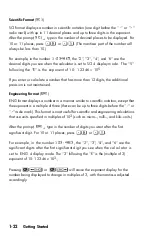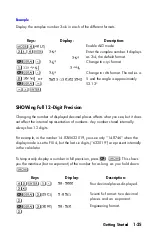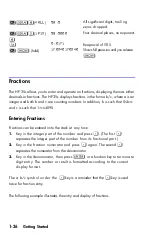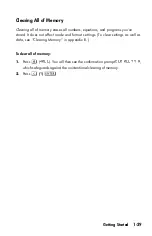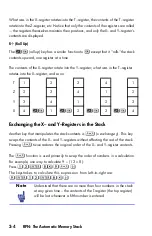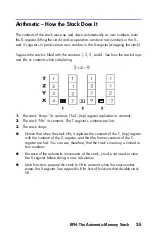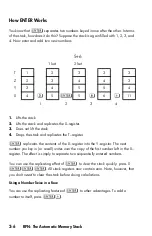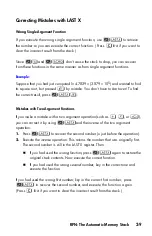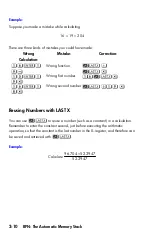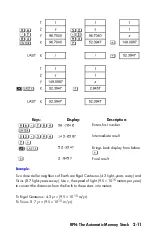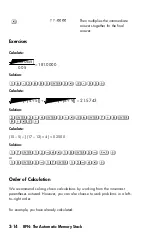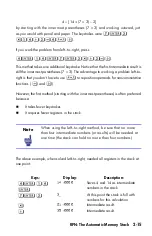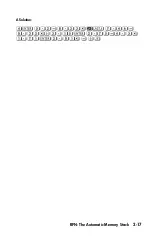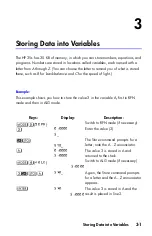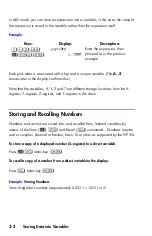
2-6
RPN: The Automatic Memory Stack
How ENTER Works
You know that
separates two numbers keyed in one after the other. In terms
of the stack, how does it do this
?
Suppose the stack is again filled with 1, 2, 3, and
4. Now enter and add two new numbers:
1.
Lifts the stack.
2.
Lifts the stack and replicates the X–register.
3.
Does
not
lift the stack.
4.
Drops the stack and replicates the T–register.
replicates the contents of the X–register into the Y–register. The next
number you key in (or recall)
writes over
the copy of the first number left in the X–
register. The effect is simply to separate two sequentially entered numbers.
You can use the replicating effect of
to clear the stack quickly: press 0
. All stack registers now contain zero. Note, however, that
you don't
need
to clear the stack before doing calculations.
Using a Number Twice in a Row
You can use the replicating feature of
to other advantages. To add a
number to itself, press
.
5+6
1 lost
2 lsot
T
1
2
3
3
3
Z
2
3
4
4
3
Y
3
4
5
5
4
X
4
5
5
6
11
1
2
3
4
Summary of Contents for 35s
Page 1: ...HP 35s scientific calculator user s guide H Edition 1 HP part number F2215AA 90001 ...
Page 14: ...12 Contents ...
Page 15: ...Part 1 Basic Operation ...
Page 16: ......
Page 46: ...1 30 Getting Started ...
Page 63: ...RPN The Automatic Memory Stack 2 17 A Solution ...
Page 64: ...2 18 RPN The Automatic Memory Stack ...
Page 74: ...3 10 Storing Data into Variables ...
Page 180: ...12 14 Statistical Operations ...
Page 181: ...Part 2 Programming ...
Page 182: ......
Page 246: ...15 12 Solving and Integrating Programs ...
Page 270: ...16 24 Statistics Programs ...
Page 284: ...17 14 Miscellaneous Programs and Equations ...
Page 285: ...Part 3 Appendixes and Reference ...
Page 286: ......
Page 308: ...B 8 User Memory and the Stack ...
Page 322: ...C 14 ALG Summary ...
Page 336: ...D 14 More about Solving ...
Page 346: ...E 10 More about Integration ...
Page 352: ...F 6 Messages ...
Page 370: ...G 18 Operation Index ...
Page 382: ...Index 12 ...

